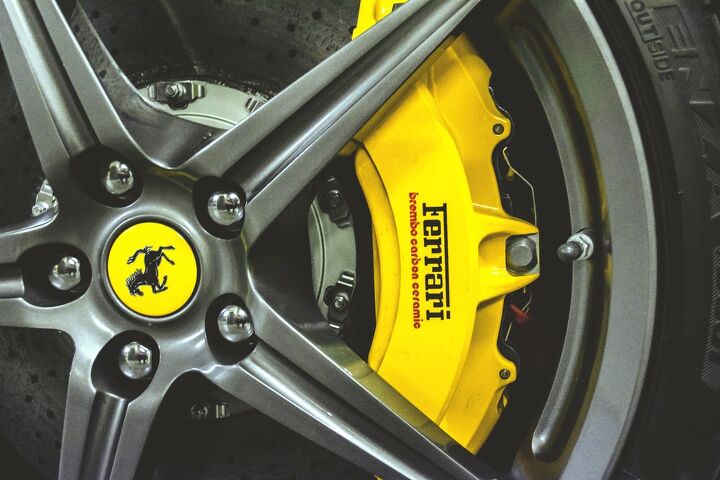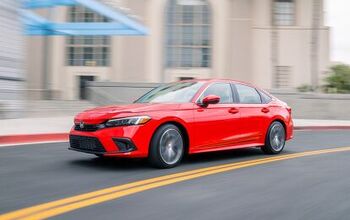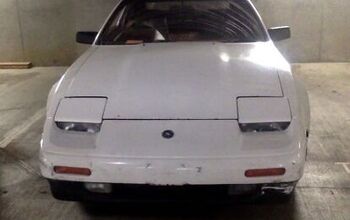23,555 More Ferraris Recalled Over Brake Failure Risk

Ferrari has recalled 23,555 vehicles manufactured between 2005 and today, representing a sizable chunk of the brand's output. As with the recall Ferrari issued in October of 2021, the company remains worried about the potential of dangerous brake failure. Though your author imagines the physical threat this actually presents to vehicle owners is limited, because most Ferrari products spend their entire lives in climate-controlled garages as motionless baubles.
Still, it may pose some amount of risk to in-house mechanics and multi-millionaires who actually drive their collectible cars and aren't Jay Leno (he's sworn off the brand). So it's likely better for Ferrari to notify the public than simply playing the odds that nobody will notice for another 15 years.
Whereas the earlier recall affected the Ferrari 458 and 488, the new one is substantially larger and has managed to incorporate exceptionally rare models — like the F60 America and LaFerrari Aperta — that cost more money than some people manage to earn in a lifetime.
Other examples include the 430 (2005-2009), 488 Pista (2019-2020), 612 (2010-2011), 612 Scaglietti (2005-2011), 812 (2018-2022), California (2009-2017), California T (2015-2017), F12 Berlinetta (2013-2017), F12 TDF (2017), F8 Spider (2020-2022), F8 Tributo (2020-2022), FF (2012-2016), GTC4Lusso (2018-2020), GTC4Lusso T (2018-2019), LaFerrari (2013-2015), Portofino (2019-2022), and Roma (2021-2022).
The National Highway Traffic Safety Administration (NHTSA) has an expansive report sheet for impacted models and their common problems. According to the documents, Ferrari found that the brake fluid reservoir may not be venting properly. This runs the risk of creating a vacuum in the reservoir which can cause brake fluid to seep out. Obviously, if you don't have enough brake fluid, the pedal will get spongy and you'll eventually have a serious safety issue to deal with. Ferrari said the defect "may lead to partial or total loss of braking capability."
Considering the brand only delivers about 9,000 cars annually and this builds on an earlier recall that was almost 10,000 cars strong, the whole situation is pretty embarrassing. We're looking at billions of dollars worth of high-end cars representing almost everything Ferrari has had on offer since 2005 here. But the solution appears to be straightforward and isn't wholly reliant on a "software fix" that's allegedly been designed to address a mechanical fault.
"The repair consists of replacing the brake fluid reservoir cap [with improved ventilation] and updating the software in the affected vehicles to provide for a different warning message if the vehicle should lose sufficient brake fluid," the Italian company explained in the safety reports. "Ferrari will send a notice letter to all affected vehicle owners to warn them of this issue, and instruct them 1) to contact an authorized Ferrari dealer to schedule the free recall repair, and 2) that in the meantime, remind them that if the “low Brake Fluid” warning message appears on the vehicle dashboard, the driver should pull off the road as soon as it is safe to do so, and then contact Ferrari Roadside Assistance and get towed to the nearest authorized Ferrari dealer."
Additional details showed that the warning message won't come on until the amount of brake fluid in the reservoir decreases by approximately 50 percent of its maximum level. For older models, this may just be a warning light and some chimes or buzzing. On newer models, Ferrari also plans on having cars display a text warning that directs drivers to drive slowly and head in for repairs. Though towing will likely be the preferred option.
Owners should begin receiving letters from Ferrari with instructions for the fix before September 24, 2022 — at which point the dealers should all be notified and instructed on how to perform the necessary work.
[Image: Johnnie Rik/Shutterstock]
Become a TTAC insider. Get the latest news, features, TTAC takes, and everything else that gets to the truth about cars first by subscribing to our newsletter.

A staunch consumer advocate tracking industry trends and regulation. Before joining TTAC, Matt spent a decade working for marketing and research firms based in NYC. Clients included several of the world’s largest automakers, global tire brands, and aftermarket part suppliers. Dissatisfied with the corporate world and resentful of having to wear suits everyday, he pivoted to writing about cars. Since then, that man has become an ardent supporter of the right-to-repair movement, been interviewed on the auto industry by national radio broadcasts, driven more rental cars than anyone ever should, participated in amateur rallying events, and received the requisite minimum training as sanctioned by the SCCA. Handy with a wrench, Matt grew up surrounded by Detroit auto workers and managed to get a pizza delivery job before he was legally eligible. He later found himself driving box trucks through Manhattan, guaranteeing future sympathy for actual truckers. He continues to conduct research pertaining to the automotive sector as an independent contractor and has since moved back to his native Michigan, closer to where the cars are born. A contrarian, Matt claims to prefer understeer — stating that front and all-wheel drive vehicles cater best to his driving style.
More by Matt Posky
Latest Car Reviews
Read moreLatest Product Reviews
Read moreRecent Comments
- ToolGuy First picture: I realize that opinions vary on the height of modern trucks, but that entry door on the building is 80 inches tall and hits just below the headlights. Does anyone really believe this is reasonable?Second picture: I do not believe that is a good parking spot to be able to access the bed storage. More specifically, how do you plan to unload topsoil with the truck parked like that? Maybe you kids are taller than me.
- ToolGuy The other day I attempted to check the engine oil in one of my old embarrassing vehicles and I guess the red shop towel I used wasn't genuine Snap-on (lots of counterfeits floating around) plus my driveway isn't completely level and long story short, the engine seized 3 minutes later.No more used cars for me, and nothing but dealer service from here on in (the journalists were right).
- Doughboy Wow, Merc knocks it out of the park with their naming convention… again. /s
- Doughboy I’ve seen car bras before, but never car beards. ZZ Top would be proud.
- Bkojote Allright, actual person who knows trucks here, the article gets it a bit wrong.First off, the Maverick is not at all comparable to a Tacoma just because they're both Hybrids. Or lemme be blunt, the butch-est non-hybrid Maverick Tremor is suitable for 2/10 difficulty trails, a Trailhunter is for about 5/10 or maybe 6/10, just about the upper end of any stock vehicle you're buying from the factory. Aside from a Sasquatch Bronco or Rubicon Jeep Wrangler you're looking at something you're towing back if you want more capability (or perhaps something you /wish/ you were towing back.)Now, where the real world difference should play out is on the trail, where a lot of low speed crawling usually saps efficiency, especially when loaded to the gills. Real world MPG from a 4Runner is about 12-13mpg, So if this loaded-with-overlander-catalog Trailhunter is still pulling in the 20's - or even 18-19, that's a massive improvement.

































Comments
Join the conversation
I had a 308 in the 80's. Said Matchbox on the bottom.
All that verbiage for a brake fluid reservoir cap that sorta kinda fails over time? That's all it is, right? The vent hole gets plugged up or something. Quelle horreur, it's the end of civilization as we know it. What happens when Micky D's doesn't put enough extra ketchup in your order at the take-out window? You must have an existential histrionic fit!
Cue the cheapskate commenter: "Jeez. I drove my 1987 Corolla 734,562 miles, the last 83K with the emergency spare on the left rear, and it didn't even use up all the tread! Plus, I never had brake failure and it never used a drop of oil even though I used Walmart $1.88 stuff in a plastic gallon jug. I guess Toyota could teach those Ferrari guys sump'n about how to build cars!"